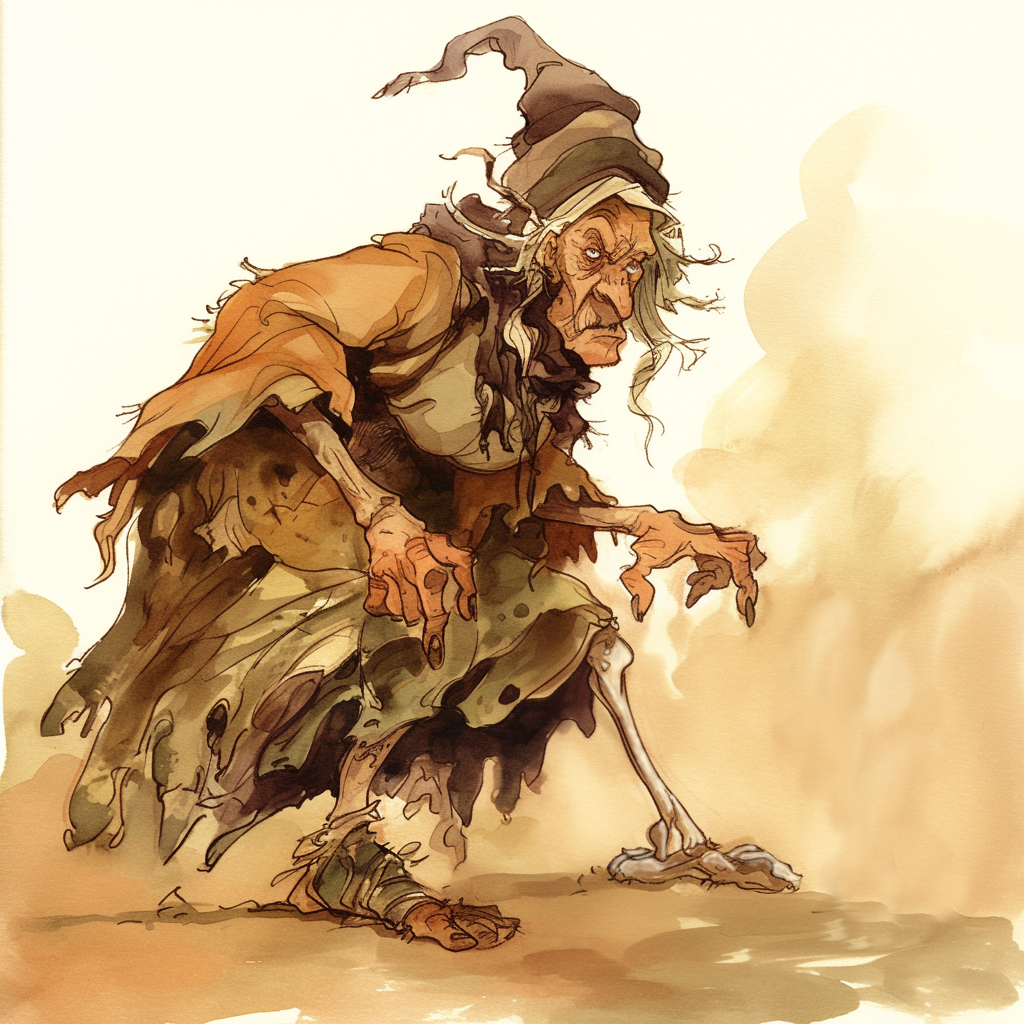Baba Yaga Yagishna

The True Baba Yaga), the Bone-legged Crone. Formerly N, then CE; power of the dead, roads and magic [She/Her]; Dead
Pantheon: Slavic
Symbol: A skull with flaming eyes
Former Realm: Outlands / Hinterlands / The Other World
Proxies: None
Most cutters have heard something about the archfey Baba Yaga, the most powerful of hags. However, she’s not the first ugly old witch to go by this name. The first Baba Yaga, perhaps the mother of the current one, used to be a Slavic power of the dead, a psychopomp who would guide souls to their respective realm. For that purpose, one of her legs was skeletal (although some say it was made from clay, iron or gold). Somehow, stepping with this leg allowed her to instantly plane shift into any realm of the Slavic deities whether she had permission or not.
However, something changed. Perhaps, because of all the hags who worshipped the goddess, Baba Yaga slowly shifted into to wickedness. In the end, she declared war on the Slavic pantheon. The details of this conflict are lost to time, but by the end of it, Yaga was destroyed. Her chicken-legged hut and many other artifacts were taken over by the current Baba Yaga.
Her former realm, the Other World, is now occupied by Veles—he calls it the Tsardom of Gold). However, there are some remnants of old Baba Yaga’s realm hidden around here and there.
Baba Yaga left no proxies, however there are some of her servants still around. Swan-geese, giant swan-like birds, were Baba Yaga’s servants, and a number of them abandoned her when she turned to evil. These birds of generally neutral disposition roam the Outlands, Astral and some have even migrated as far as the Plane of Air. They are quite intelligent and can speak a number—but are not above eating humanoids.

Sources: Margarita and Jon Winter-Holt. Margarita notes: While this homebrew power is based on Slavic folklore and beliefs, the amount of actual information we have on pre-Christian Slavic deities is so minuscule that building any kind of lore out of it is impossible. However, there are a lot of folk beliefs about things these deities are thought to represent, which I have worked into the piece.

